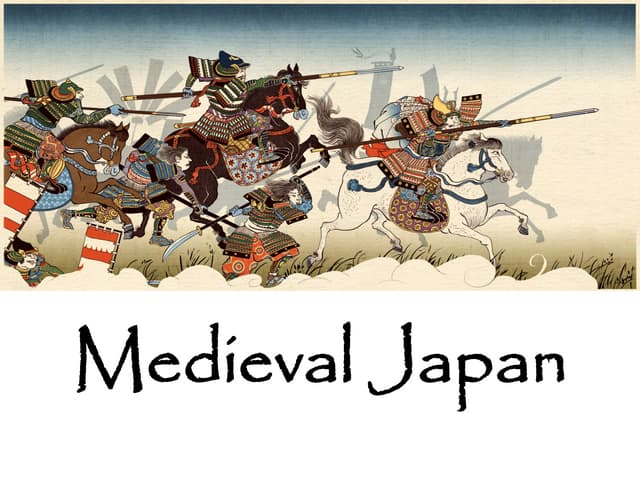- When did Japan first have contact with the West?
- The timeline of Japanese history
- Social life and culture in ancient Japan
- Everyday life in Feudal Japan
- Religion and Philosophy
- FAQ
When did Japan first have contact with the West?
Japan’s first significant contact with the West occurred in 1543, when Portuguese traders and missionaries arrived on the island of Tanegashima. This marked the beginning of European influence in Japan, introducing new technologies such as firearms and initiating the spread of Christianity. The Portuguese were the first Europeans to establish contact, followed by the Spanish and Dutch, who brought goods, knowledge, and cultural exchanges to ancient Japan over the next century.
In response to growing foreign influence, particularly the spread of Christianity, Japan adopted a policy of isolation (Sakoku) in the early 17th century, closing its borders to most foreign nations. This isolation lasted for over two centuries until Commodore Perry’s arrival in 1853, which forced Japan to open its ports again, leading to the Meiji Restoration and the modernization of Japan.
Japan’s initial contact with the West had lasting cultural, political, and social impacts that shaped the nation’s history, influencing everything from its military strategies to the ancient Japanese worldview.
The timeline of Japanese history
Japan's rich and complex history spans millennia, shaped by both internal and external forces. From ancient hunter-gatherer societies to a modern global power, the nation's evolution is a fascinating tale. Let's explore the key periods and events that have defined Japan's past.
Ancient Japan
- Jōmon Period (10,000 BCE - 300 BCE): Early hunter-gatherer societies, development of pottery and tools.
- Yayoi Period (300 BCE - 300 CE): Introduction of rice cultivation, formation of early states, and development of metalworking.
Classical Japan
- Kofun Period (300-538 CE): Rise of powerful clans, construction of large tombs (kofun), and the emergence of the Yamato court.
- Asuka Period (538-710 CE): Introduction of Buddhism from China, development of written language, and the Taika Reforms.
- Nara Period (710-794 CE): Establishment of the capital at Nara, flourishing of Buddhist culture, and the development of a centralized government.
- Heian Period (794-1185 CE): Shift of the capital to Heian-kyō (Kyoto), flourishing of court culture, literature, and art.
Medieval Japan
- Kamakura Period (1185-1333 CE): Rise of the samurai class, establishment of the shogunate system, and Mongol invasions.

- Muromachi Period (1336-1573 CE): Civil wars, decline of the shogunate, and development of tea ceremony and Noh theater.
- Azuchi-Momoyama Period (1573-1603 CE): Unification of Japan under Oda Nobunaga and Toyotomi Hideyoshi, construction of opulent castles.
Early Modern Japan
- Edo Period (1603-1868 CE): Establishment of the Tokugawa Shogunate, Sakoku policy (isolation from the West), and economic and cultural development.
Modern Japan
- Meiji Restoration (1868): Overthrow of the Tokugawa Shogunate, rapid modernization and industrialization, and adoption of Western technology and institutions.
- Imperial Japan (1868-1945): Expansionist policies, World War II, and defeat by Allied Powers.
- Post-War Japan (1945-Present): Economic miracle, cultural influence, and technological innovation.
This timeline provides a basic overview of the major periods and events in Japanese history. To delve deeper into specific aspects, you can explore topics such as Japanese religion, art, literature, and social customs.
Social life and culture in ancient Japan
While political and military events played a significant role in shaping the history of ancient Japan, it’s important to also explore the social life and cultural aspects of the era. The lives of ordinary people during these periods were often heavily influenced by Buddhism, Shinto, and the evolving role of the samurai.
Everyday life in Feudal Japan
In the medieval periods of ancient Japan, the majority of people lived as peasants, working the land in rural villages. These villages were often organized into self-sustaining communities, where everyone contributed to farming, fishing, and other essential activities. The introduction of rice farming in earlier periods of ancient Japan laid the foundation for an agricultural society, and rice became a central part of the Japanese economy.
Crafts such as pottery, weaving, and metalworking flourished during these times. The cultural practices of ancient Japan also evolved, with the Japanese tea ceremony, calligraphy, and ink painting gaining prominence in later periods, particularly during the Edo Period. Additionally, traditional theater forms such as Noh and Kabuki began to take shape, influencing Japanese performing arts for centuries to come. These cultural developments were central to shaping the rich social and artistic heritage of ancient Japan that continues to influence Japan today.
Religion and Philosophy
The spread of Buddhism in Japan had a lasting influence on its culture and social life. Zen Buddhism became particularly important, especially among the samurai, due to its emphasis on meditation, discipline, and simplicity. The Shinto religion, Japan’s indigenous faith, also remained an essential part of everyday life, with rituals and ceremonies designed to honor nature and ancestors.
FAQ
- When was Japan first discovered by Europeans?
Japan was first encountered by Europeans in 1543 when a Portuguese ship arrived on the island of Tanegashima.
- What are the major periods in Japanese history?
Key periods include the Jomon, Yayoi, Kofun, Nara, Heian, Kamakura, Muromachi, Edo, and Meiji periods.
- Who was the first European to contact Japan?
Portuguese traders and missionaries were the first Europeans to arrive in Japan in 1543.
- What are the most important historical events in Japanese history?
The 14th century in Japan was marked by internal conflict, including the Nanboku-chō period, and the rise of the samurai.
- How did Japan open up to the West?
Japan was forced to open its ports to Western nations, particularly through the intervention of Commodore Perry in 1853.
In conclusion, ancient Japan is the cornerstone of Japan’s rich cultural and historical legacy. From early societies to feudal rule, the major periods of ancient Japan shaped its unique identity, influencing both Japanese traditions and global culture. Exploring these periods helps us understand Japan’s profound historical impact.






